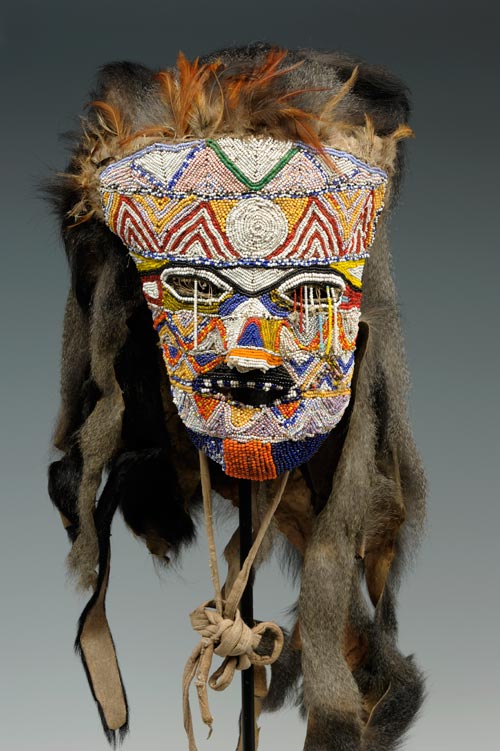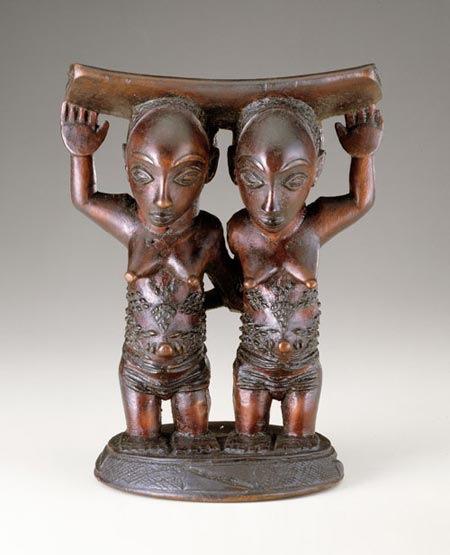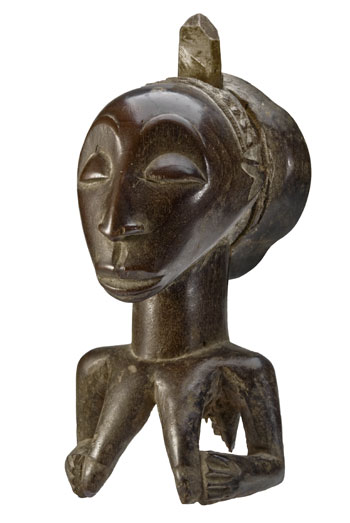Exhibit:
Introduction | Ancient sky-watchers | Celestial deities in the time of the pharaohs | Cosmic connectors | The sun at which one cannot stare | Without the moon, there would be no life | Lunar enlightenment | Cosmic models | Celestial guidance | A universe of possibilities |
Education:
Astronomy in Africa | ArtLAB+ interviews | Star sounds | Cosmos diary (blog) | African Cosmos (Twitter) | Family guide | A Galaxy of Activities | Teacher Lesson Plans | Sons of the Moon DVD
For the Luba and Tabwa peoples of the Democratic Republic of the Congo, the light of the moon symbolizes the special insight that occurs during spirit possession.
In Luba traditions, twins are called "children of the moon" and are associated with divination and the spirit world. In Tabwa arts, the triangular pattern balamwezi is a sign of hope and rebirth linked with the rising of the new moon.
Since quartz crystals capture and reflect moonlight, they are associated with enlightenment communicated through dreams.
White pigment applied to the face of a spirit medium represents moonlight.
In Luba traditions, twins are called "children of the moon" and are associated with divination and the spirit world. In Tabwa arts, the triangular pattern balamwezi is a sign of hope and rebirth linked with the rising of the new moon.

White pigment and beads refer to the moon and suggest a Luba diviner's powers of insight and enlightenment during consultations.
Photograph by Mary Nooter Roberts, 1988
Photograph by Mary Nooter Roberts, 1988




